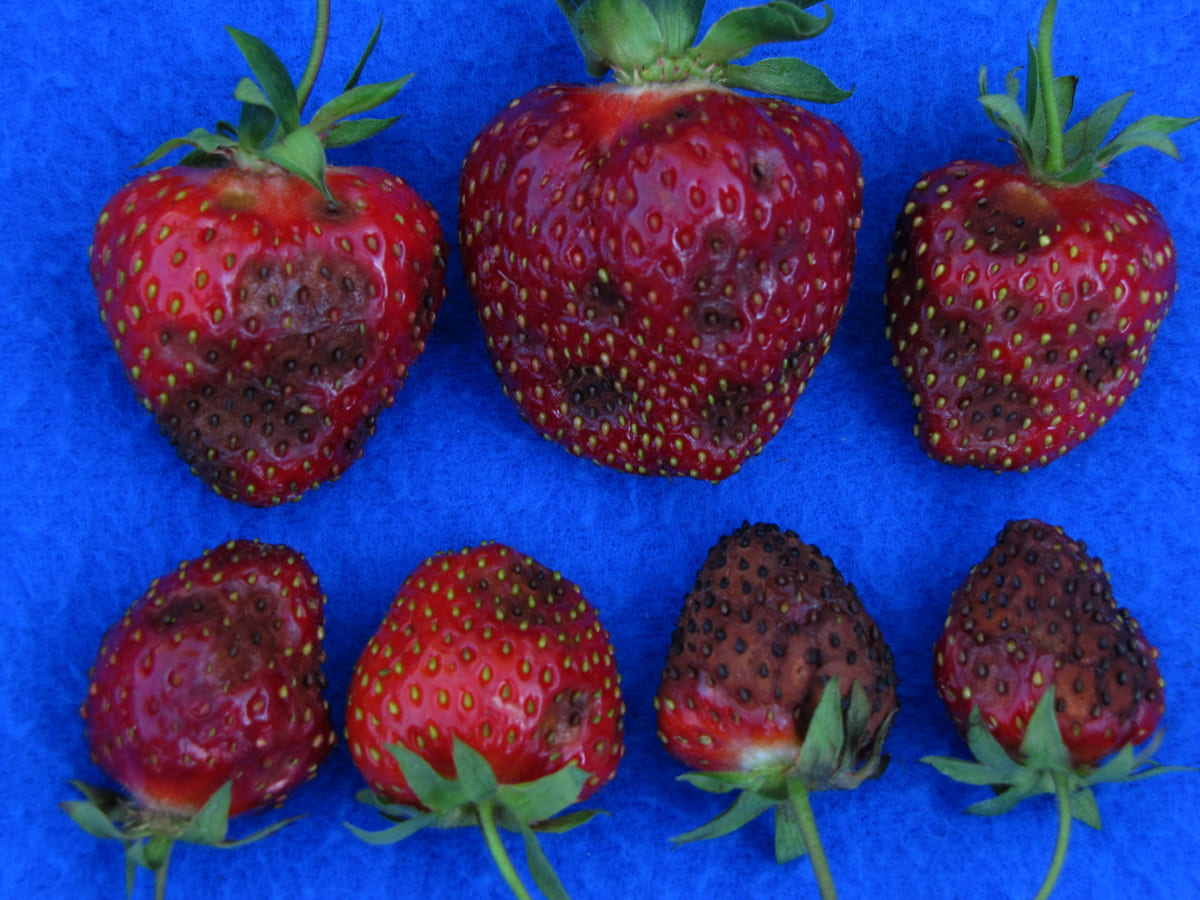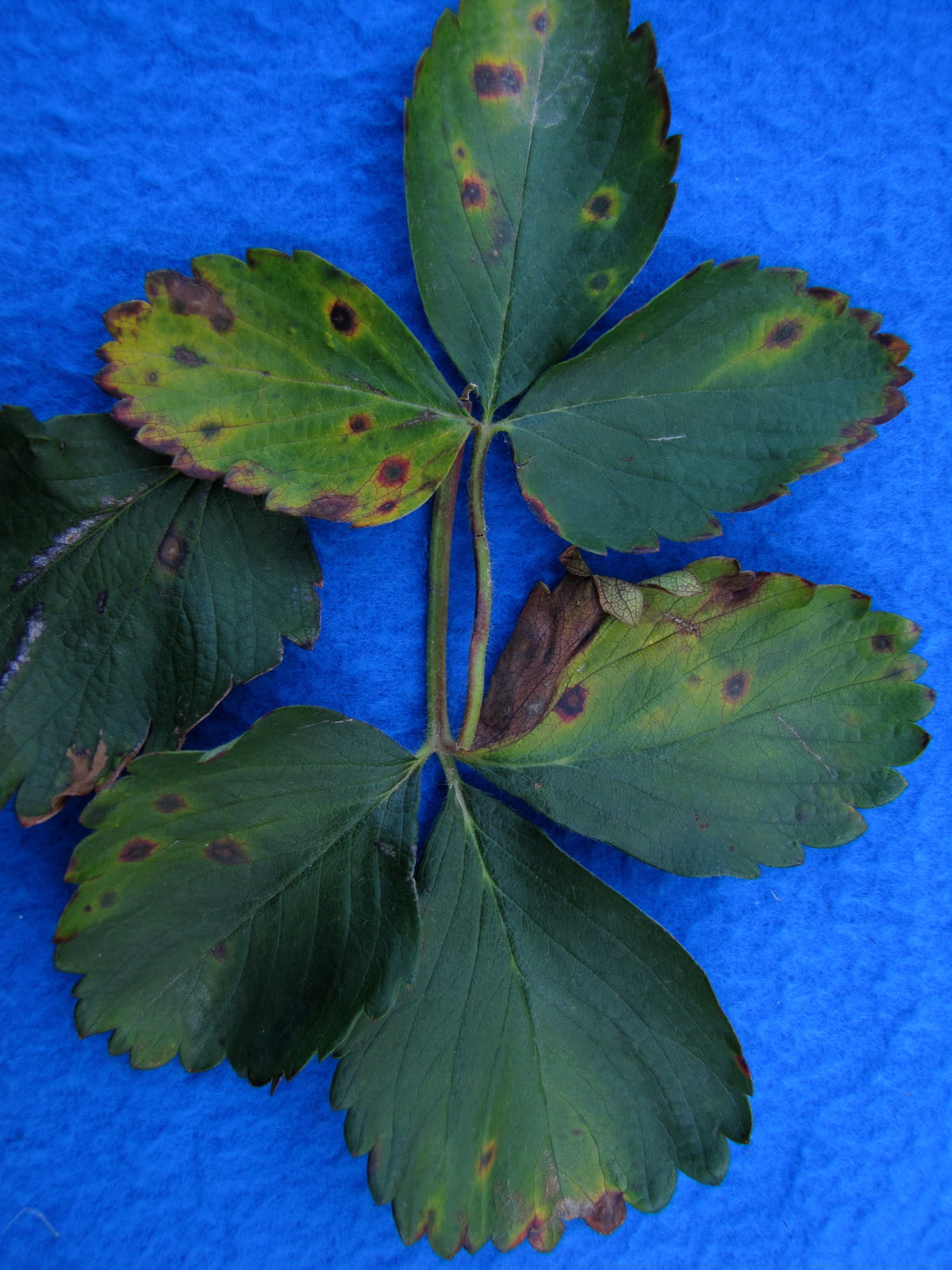This disease has been observed sporadically on Long Island, reflecting the fact the pathogen is not widespread and conditions are not always favorable. A combination of high temperature (80 F is optimum), the most important factor, and wet plant tissue are needed for anthracnose to develop. Conditions evidently were favorable during spring in 2010, 2012, 2018 and 2019. Symptoms were first seen from mid May to early June those years by Cornell Cooperative Extension IPM scouts. Spores of the pathogen are dispersed by splashing water. Humidity near 100% is needed for infection. Spores are produced abundantly and disease development is rapid under favorable conditions. Consequently crops can quickly become severely affected.
The primary symptom is fruit rot. These start to form on ripening fruit as small, white to light brown, water-soaked spots that typically enlarge quickly, becoming dark brown to black, slightly sunken, and can consume the entire fruit. Green fruit can also develop spots that are very small, being restricted to individual seeds, which turn black. Symptoms also develop on crowns, leaves, flowers, pedicels and peduncles. Infected crown tissue can result in plants wilting and dying.
Symptoms are often associated with a specific variety, which is not because of greater susceptibility, but rather reflects the fact the pathogen was present on these plants when purchased. Infected transplants and contaminated soil are the main sources of the pathogen. It can be present without causing symptoms. Indexing is not done for this pathogen.
Successfully harvesting from an infested planting can be difficult because symptoms can develop quickly after harvest. As much as 25% of fruit could start to rot in just 1 day! Unfortunately anthracnose is very difficult to control when conditions are favorable during harvest, especially when management practices were not implemented earlier.
The pathogen can survive between seasons in soil or infested plant debris, especially mummified fruit. Starting with anthracnose-free plants is a key management practice. Sweet Charlie is an early variety with resistance. High levels of nitrogen favor anthracnose development, therefore using minimal fertilizer is recommended where the pathogen is established. Minimize pathogen dispersal by using straw mulch, at least between rows, and drip irrigation. Plastic mulch between rows has been shown to increase splash dispersal of the pathogen. The pathogen can also be moved by workers or on equipment, therefore affected fields should be worked in last.
For commercial growers, strobilurin fungicides (Abound, Cabrio, Pristine) currently are the most effective option for anthracnose. They can only be applied twice before a different class of fungicide must be used. Switch is the best choice for alternating. Captan, Captevate, and Thiram are good protectant fungicides for early in the season.
Below: Salmon-colored masses of spores are diagnostic for the fungus causing anthracnose. They are evident upon close examination of the first photograph below taken the day fruit was picked. They are more evident in the second photograph of the fruit after it incubated on wet paper towel in a closed plastic bag for a day, which is a useful diagnostic method. These photographs of the same fruit also illustrate how quickly symptoms of anthracnose fruit rot can develop.
Please Note: The specific directions on pesticide labels must be adhered to — they supersede these recommendations if there is a conflict. Any reference to commercial products, trade or brand names is for information only; no endorsement is intended. For up-to-date information on labeled fungicides see Cornell Pest Management Guidelines for Berry Crops.
Updated March 2021.







